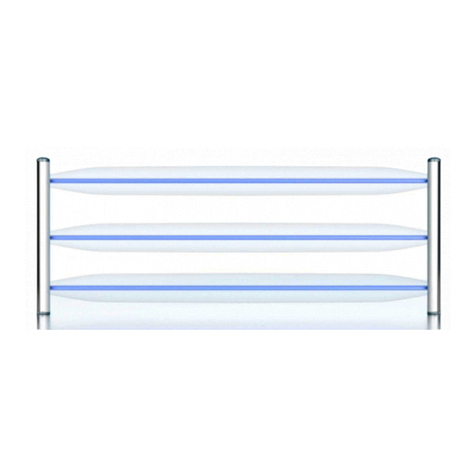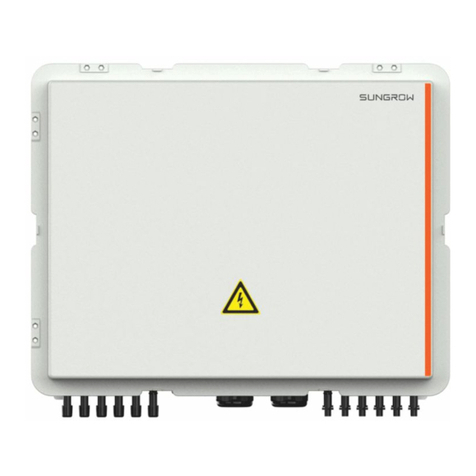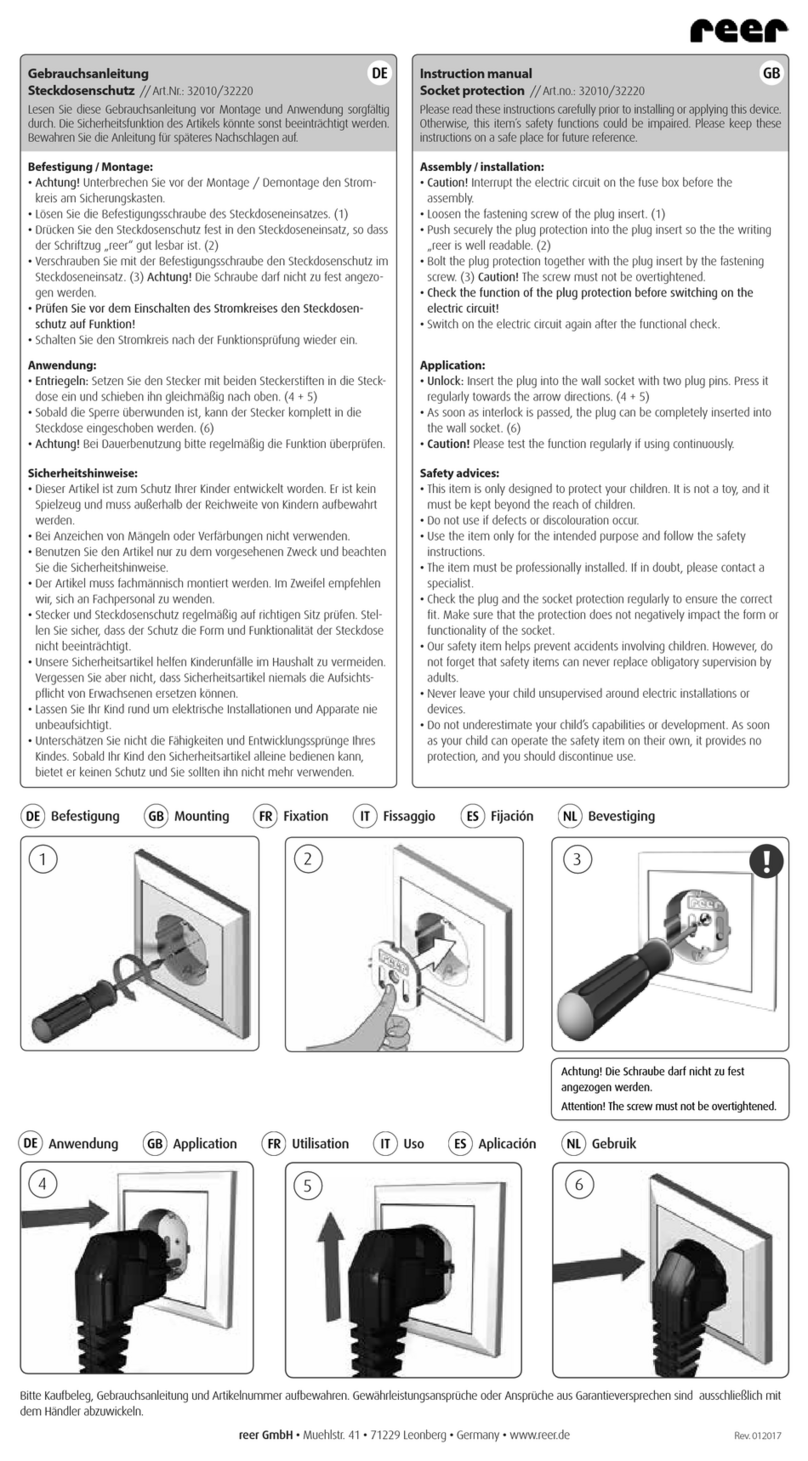9
5. INSTALLATION.
•Read and respect any information as regards to Safety,
which is described in section 2 of this document. To ob-
viate any of the described indications, can cause serious or very
serious injuries to persons with direct contact or accidents in the
vicinity, as well as failures in the own bypass panel, equipment or
equipments and/or loads connected to the system.
•Check that the data in the nameplate is the required one by
the installation.
•A wrong connection or manoeuvring, can cause failures in
the panel, equipment or equipments and/or loads connected
to the system. Read the instructions of this manual carefully
and follow the stated steps in the established order.
•The connection will only be done, if the switches of
the equipment or equipments are in off position and
with no mains (switch or switches of the power supply line
or lines of the panel must be turned «Off»).
•Any connection of the bypass panel described in this docu-
ment will be done according to both the labelling of the
unit and the single line diagrams. Structurally, there are six
types of panels, regardless of their possible configurations
(L, M, N,...):
Generic manual bypass panel for a standard UPS (Fig. 3).
Generic manual bypass panel for a standard UPS with
separate bypass line (Fig. 4).
Manual bypass panel for «n» standard parallel or re-
dundant UPS’s (Fig. 5). For UPS of CUBE3+, TWIN PRO and
TWIN PRO 33 series.
Manual bypass panel for «n» standard parallel or redun-
dant UPS’s (Fig. 6), for UPS of ADAPT and X-TRA series.
Manual bypass panel for «n» parallel or redundant UPS’s
with separate bypass line (Fig. 7), for UPS of CUBE3+,
TWIN PRO and TWIN PRO 33 series.
Manual bypass panel for «n» parallel or redundant UPS’s
with separate bypass line (Fig. 8), for UPS of ADAPT and
X-TRA series.
Apart from the stated structures, there are several aspects re-
garding the connection of the control wiring of each UPS series,
which are explained later on in this section.
•The reproduced illustrations in this document are mere
examples, and they are intended to show the lineal order
layout of the manoeuvring mechanisms, without taking ac-
count of the physical format of them due to the power rate
of the equipment. Another factor to consider, it is that all
figures show the circuit breaker switch option “P” of the
manoeuvring mechanisms.
•According to the model of the panel, the enclosure can differ
(plastic, metallic case or metallic cabinet), so the aspect of
them could be affected, but the order would be the same.
•Depending on the power of the bypass panel and requested
version, the manoeuvring mechanisms can differ in quantity
(parallel systems), quantity of poles (depending on the configura-
tion), format, size and type (switch or circuit breaker), but they
will always be identified through the labelling.
Pay attention to the stated steps to change the oper-
ating mode, attending the labelling over the manoeu-
vring mechanisms.
•The manual bypass panel version with separate bypass line (-B),
has additional parts of connection and control, which can only
be found in this type of panel. Omit, any reference to them in the
standard or basic version.
5.1. TO CONSIDER IN THE INSTALLATION.
•These instructions are generic for any manual bypass panel
of this series. Omit those not available terminal connections.
•All connections in the panel are done through terminals.
Nevertheless in some models and due to their high power or
current, the connection of the cables can be done directly to
the copper rods of the own switches.
•Regarding the main PE cable and earth bonding cable con-
nections, the panels usually have two points located on op-
posite ends, generally by threaded stud.
•In the documentation supplied in the CD-ROM to-
gether with each UPS, it is available the information
regarding the «Recommended installation» for each one of
the input and output configurations. In this document, it is
shown the circuit diagrams, the size of the protections and
minimum cross cable section of the cables that join the
equipment with the panel according to the nominal oper-
ating voltage. All figures are calculated for a maximum
cable length of 30 m between the distribution panel,
equipment and loads.
For higher lengths correct the cross cable sections in
order to avoid dropping voltages, by respecting the
Regulations or Standards corresponding to the country.
In the same documentation and for each configuration, it
is available the information for «N» units in parallel, as
well as the features of the own «Backfeed protection».
It is mandatory to respect all the indications stated in
the UPS user’s manual as regards to the «Backfeed pro-
tection», considering the possibility of having or not the
separate bypass line and the corresponding actions to
make in each case.
•In parallel systems, the length and cross cable sec-
tion, which goes from the panel till each UPS and vice
versa, will be the same for all of them with no exception.
•Cross cable section must be always considered according
to the size of the own terminals of the switches, in order
to clamp them properly and to give an optimal contact be-
tween both parts.
USER'S MANUAL




